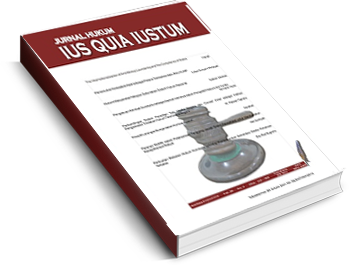Main Article Content
Abstract
This research is managed to answer three main problems: First, why was the Special Region of Surakarta obliterated? Second, is there any possibility to reconstruct and acknowledge the specialty of Surakarta? And, third, what attempts can be taken to make Surakarta acknowledged as Special Region again? This research aims at: First, understanding the background of the obliteration of Surakarta Special Region; second, studying the possibility of re-acknowledgement of the specialty of Surakarta, and third, finding out the attempts that can be conducted to acknowledge Surakarta as Special Region again. This research is a normative legal study using the regulations of law and several statutes as the primary legal material, and the literature relevant to the research object as the secondary legal material. This research uses the historical approach and statute approach. The analysis method used is qualitative descriptive. The conclusion of this research are: First, in historical perspective, the obliteration of Special District of Surakarta resulted from the social movement of the community called “gerakan anti swapraja” which demanded to revoke the special status of Surakarta. Second, the re-acknowledgement of the special status of Surakarta depends of the political will of Central Government, People Representative Council, Regional Government, Regional Legislative, and the community of Surakarta (ex Karesidenan Surakarta). Third, the attempt that can be conducted in order that Surakarta is re-acknowledged as a Special District is by the extension of the region or through the assessment of Law No. 10 of 1950 by Constitution Assembly.
Keywords
Article Details
Authors who publish with this journal agree to the following terms:
a. Authors retain copyright and grant the journal right of first publication with the work simultaneously licensed under a Creative Commons Attribution License that allows others to share the work with an acknowledgement of the work's authorship and initial publication in this journal.
b. Authors are able to enter into separate, additional contractual arrangements for the non-exclusive distribution of the journal's published version of the work (e.g., post it to an institutional repository or publish it in a book), with an acknowledgement of its initial publication in this journal.




